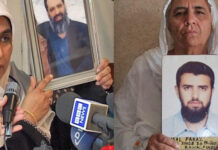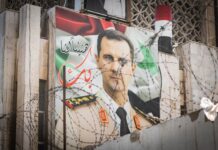April 24th marks the international commemoration of the “Armenian genocide,” but Sabina Hashmy asks if a million Armenians were really massacred by the Ottoman Turks during World War 1.
Over a century after the tragic events of 1915 the “Armenian genocide” remains a highly polarising issue impacting relations between Turkey and Armenia, and even more significantly their ties with other nations.
The events are rooted in the rabid rise of ethno-nationalism in the region, and the slow and painful disintegration of the Ottoman Empire against the backdrop of the First World War.
Armenians claim around a million of their forefathers were systematically massacred in a campaign of ethnic cleansing during the twilight years of the Ottoman Empire in 1915.
On the other hand, Turkey maintains there were thousands of deaths on both sides of the conflict and while it accepts there was resettlement of the Armenian population, it vigorously denies accusations of genocide.
Armenians under Ottoman rule
During the period of Ottoman rule the Christian Armenians were given semi-autonomous status through the millet system which recognised ethnic populations on the basis of religious identity.
Subscribe to our newsletter and stay updated on the latest news and updates from around the Muslim world!
Armenians managed their civic affairs through a civil administration composed of their own people, and punishments could not be given by Ottoman lawmakers unless the religious head of the particular Armenian village or town permitted it.
Ultimately the assigned leader of the Armenian people in the Ottoman empire was the head of the Armenian Church, the Ecumenical Patriarchate. He was given a more or less free hand to manage the affairs of his community through Armenian “beys,” local Armenian leaders.
This separation of military and civil control adopted by the Ottoman Empire led to widespread communal harmony. Armenians became wholly integrated and some became highly successful key members of Ottoman society. Many were appointed as Ottoman ministers at the top level of government, advised national institutions such as the National Turkish Bank and were highly trusted by the Ottoman rulers.
“In the 19th century, various Armenian families became the Sultan’s goldsmiths, Sultan’s architects and took over the currency reserves and the reserves of gold and silver, including customs duty. Sixteen of the eighteen most important bankers in the Ottoman Empire were Armenian.”
Calouste Sarkis Gulbenkian: The man and his work. Lisbon: Gulbenkian Foundation Press.2010)
Nationalism and decline of empire
In the 19th century the Ottoman Empire faced the rise of nationalism propagated by Western powers, and the growing demand for the independence of Christian peoples under Ottoman rule was fuelled not just by western nationalist ideology but often by military support.
On the empire’s western sides Greek nationalists aided by France, Great Britain and Russia, fought the Ottomans and Muslim minorities eventually breaking away to form an independent Greek state, whilst armed revolts in the Balkan region against Ottoman rule led to the formation of small nation states.
France, Britain and Russia claimed the millet system – despite its long history as a model of a generally harmonious and pluralistic society – made Christians second class citizens. So to preserve its borders and appease Western governments, the ailing Ottoman empire enacted a series of reforms known as the Tanzimat, in which all citizens would be equal and the millet system would be abolished in favour of a centralised government.
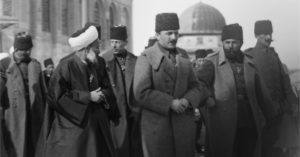
Editorial credit: Everett Collection / Shutterstock.com
The reforms were the first steps in the removal of Islamic laws, and many believe they laid the foundations for the modern secular Turkish state. Later the formation of the Armenian National Assembly allowed Armenian secular self-governance in the form of separate judicial, taxation, and penal systems under the Ottoman empire.
Towards the end of the 19th century the Armenian nationalist movement was to take shape, inspired by the events in the Balkans – its aim was the creation of an Armenian state in the Armenian majority regions of the Ottoman and Russian empires based on the secular democratic liberal ideas of the French Revolution.
Secret Armenian societies and political organisations aided by Russia were formed, initially they would use the means of political organisation and mass media to call for revolution against Ottoman rule, but later guerrilla warfare was employed.
A series of bloody battles, demonstrations, uprisings and an assassination attempt on the Ottoman ruler Sultan Abdel Hamid II led to a crackdown by the Ottoman state in an effort to quell Armenian nationalism. The Armenians – once a valuable pillar of Ottoman society -began to be seen as a disruptive element in a fragile empire.
Growth of Turkish nationalism
The spectre of ethno-nationalism had not only influenced Christian minorities under Ottoman rule, but also the Young Turks which were a group of educated, secular and liberal leaning figures who wanted to abolish the rule of the Sultan and implement a constitutional government modelled on the secular liberal democracies of Europe.
Despite their name they were in fact drawn from many ethnic groups including Turks, Jews, Greeks, and initially Armenians.
One of the factions of the Young Turks was the Committee for Union and Progress (CUP) which was rooted in ideas of nationalism and demanded rapid modernisation of the empire in the belief it would ensure its survival.
The CUP were to infiltrate the Ottoman army, and in 1908 staged a coup overthrowing Sultan Abdel Hamid II in the Young Turk Revolution. Elections were held in 1908 where the CUP won many seats in the Ottoman parliament and several nationalist political parties emerged representing the Armenian, Bulgarian and Jewish interests. The Sultan mounted an unsuccessful countercoup the following year and was deposed.
Meanwhile, the Balkan Wars of 1912 and 1913 saw the loss of almost all of the Ottoman Empire’s European territories. Turkish nationalism within the CUP rose as the empire became less European in nature and ideas of co-existence with minorities became less realistic.
The ongoing power struggle between the CUP and other Young Turk factions led to the CUP banning all other political parties and creating a one party state. Its leaders were known as the three Pashas. In 1914 they would join World War I and fight as allies of the Germans against French, British and Russian forces.
A disputed genocide
In 1914 the Pasha leaders were to launch an attack on the eastern border of the empire against the Russian army. The Battle of Sarikamesh was a disaster for the Turks – there were huge casualties ending in a decisive Russian victory.
It was a turning point in relations between the Armenians and the CUP who had initially envisioned the Armenians as an ongoing part of the Ottoman state. Now their position changed to a much narrower view of a future nation with the emphasis on Turkic ethno nationalism.
They blamed Armenian-Russian collaboration for the defeat at Sarikamesh, citing the refusal of Armenians on the Russian side to fight for them as a sign of treachery. Ongoing support for Armenian nationalism and liberation from the Ottoman state by Russia during this period meant the Pasha leadership now saw the Armenians as a traitorous fifth column with uncertain loyalties.
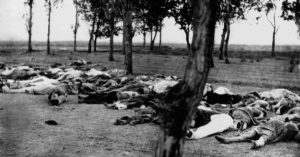
The aftermath of the battle saw the demobbing of Armenian soldiers who were killed by Ottoman soldiers for treachery. Several episodes of Armenian armed resistance against the Ottoman empire led the Pasha leaders to round up and arrest over 250 Armenian intellectuals and political leaders, most of whom would later be killed. Armenians mark the start of the “genocide” from this day on April 24th 1915.
Fears of Russian Armenian collaboration and the presence of Armenians close to the border with Russia and to Ottoman lines of communication led to the fateful decision by the Pasha leaders to deport hundreds of thousands of Armenians from Eastern Turkey to the Syrian desert where many died of starvation and disease or were killed.
The total number of dead is disputed: Turkish officials put it at 300,000 while Armenian sources claim 1.5 million died. The dispute does not end at the number of dead, Armenians insist a genocide took place and the killings were pre-meditated acts of terror intended to destroy the Armenia population, while Turkey asserts the events were a reaction to legitimate security concerns over the sovereignty of its empire during wartime.
Genocide recognition
The definition of the term “genocide” was coined many years later.
Article Two of the UN Convention on Genocide of December 1948 describes genocide as carrying out acts intended “to destroy, in whole or in part, a national, ethnic, racial or religious group.”
Many European nations such as Germany and France recognise the Armenian genocide. It is commemorated in the French capital each year and genocide denial carries a heavy fine or a year in prison. Similar stringent laws regarding “genocide denial” apply in Greece and Italy while many American Jewish groups and the Catholic Church have also offered official recognition of the massacres as genocide.
The UK has not given official recognition citing the lack of evidence available in making a decision although it acknowledges the tragedy. Other countries such as Denmark say genocide recognition is a matter for historians rather than governments to decide.
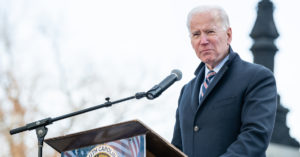
The issue of recognition has all too often rested on the its political implications. For example, Israel has declined to officially recognise the genocide for a myriad of reasons including the need to preserve ties with Turkey and its main ally in the region Azerbaijan, one of the biggest importers of Israeli arms. Others within the Israeli state fear recognition could challenge the unique nature of the Holocaust and sideline historical narratives of Jewish suffering.
In 2014 Bashar Al Assad became the first Syrian leader to openly recognise the Armenian genocide when he compared Turkish-backed Syrian rebels to the Ottoman army in 1915.
“In more recent modern times, it reminds us of the massacres perpetrated by the Ottomans against the Armenians, when they killed a million and a half Armenians and half a million Orthodox Syriacs in Syria and in Turkish territory,” he said.
Almost six years later in 2020 the Syrian Parliament made the decision to officially recognise the genocide in a formal statement as violent clashes between Turkey and Syria took place in the war torn areas in and around Idlib along their mutual border.
And today U.S. President Joe Biden looks set to fulfil one of his campaign promises when following lobbying by the Armenian American diaspora and the support of over a hundred political representatives from both sides of the political divide to officially recognise the killings of 1915 as genocide.
It’s a move, of course, that will anger America’s NATO ally Turkey, but relations between the two nations have soured over Turkish military intervention in Kurdish-held areas of Northern Syria in 2018 and its purchases of Russian air missiles.
So no doubt the events of 1915 resulted in the loss of countless lives and untold suffering. And while the recognition of the events as genocide may allow healing for the Armenian people, official recognition is too often tied to shifting political loyalties where the intention is point-scoring rather than a desire to prevent further genocides.








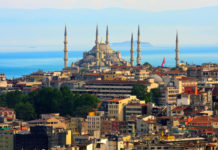

![24 Hour Road Trip Through Free Syria [Short Film]](https://5pillarsuk.com/wp-content/uploads/2025/02/IMG_5907-218x150.jpg)
